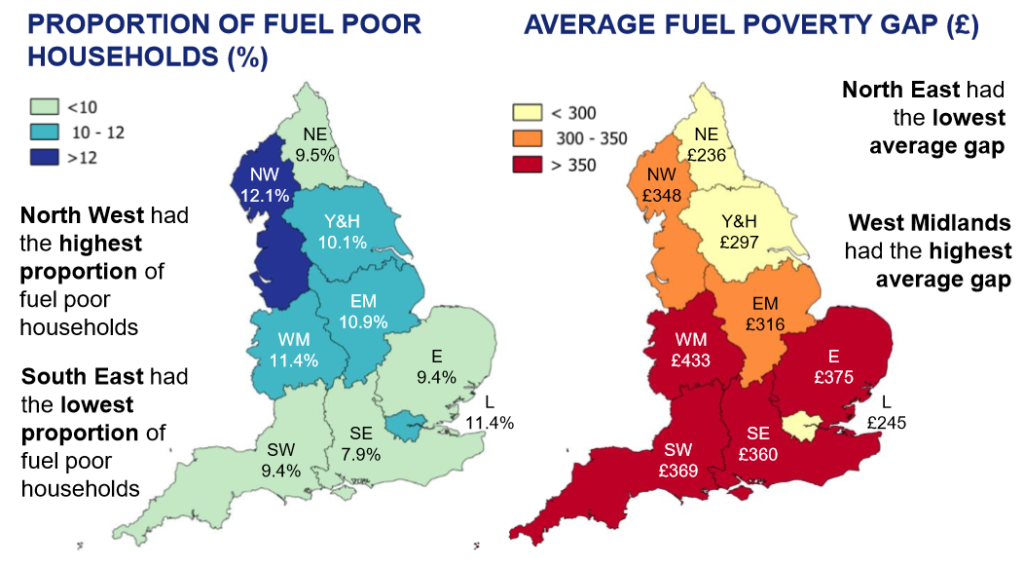In order to understand the fuel poverty gap, we need to understand the difference between the average gap and aggregate gap. The fuel poverty gap is the extra household income that would be needed to bring a household to the point of no longer being “fuel poor”.
Fuel Poverty Gap: Average vs Aggregate
AVERAGE GAP is the reduction in fuel bill that the average fuel poor household needs in order to not be classed as fuel poor.
AGGREGATE GAP is the sum of all fuel poor households’ gaps.
The Average fuel Poverty gap for England in 2018 was
£334

Up from £328 in 2017
The Aggregate fuel Poverty gap for England in 2018 was
£802m

down from £830 in 2017

According to the Department of Business, Energy and Industrial strategy (BEIS), the proportion of households in fuel poverty during 2010 to 2018 has stayed consistently between 10 – 12%. The estimated household in England which are in fuel poverty is 2.4 million. In 2018, the North West had the highest proportion of fuel poor households.
Blackburn with Darwen being 3rd highest in Lancashire with 16.5% in comparison to the national average of 10.9% (2017 figures)
